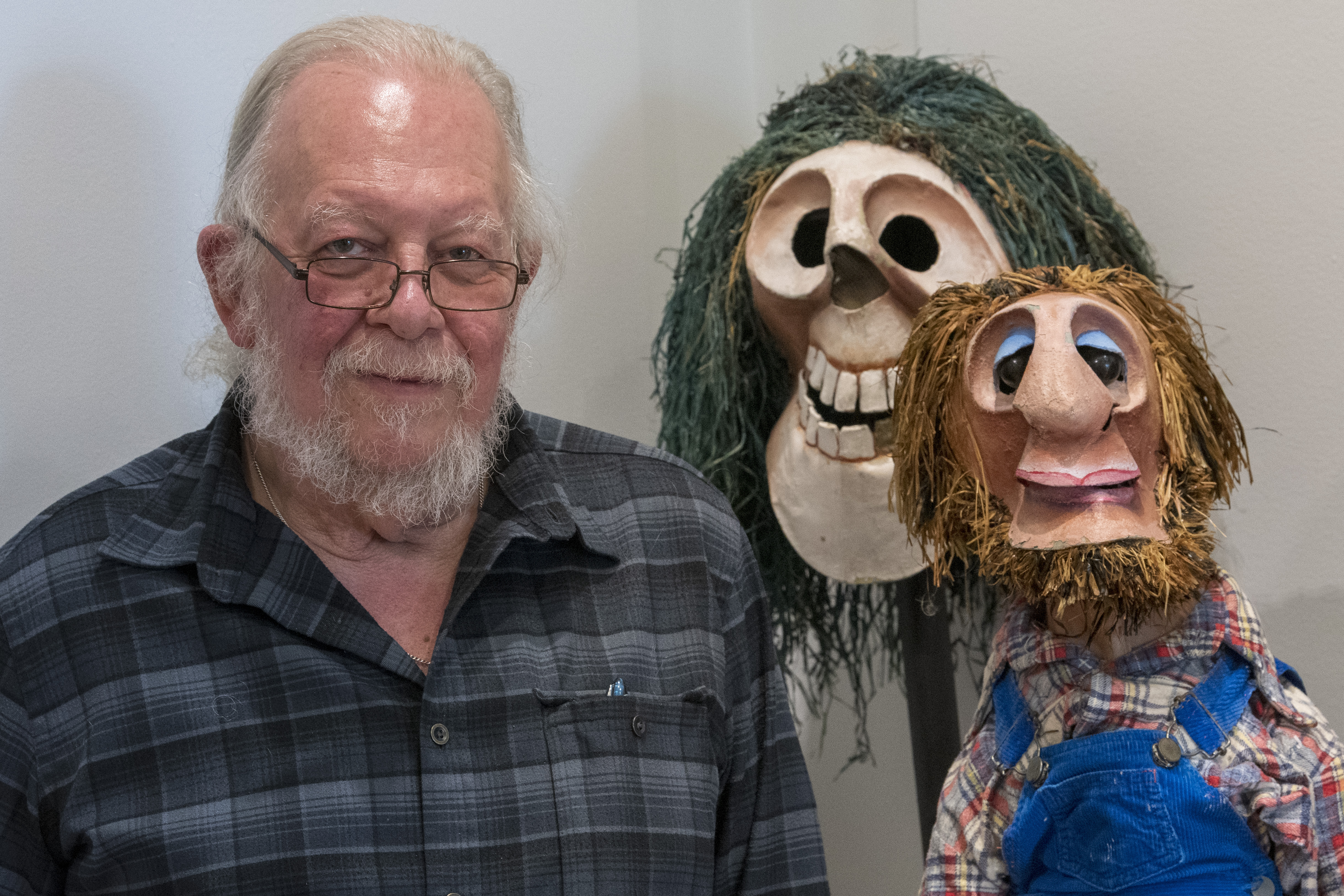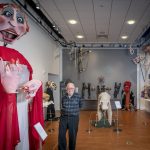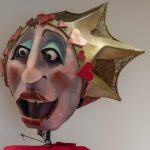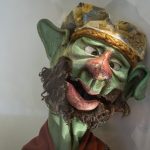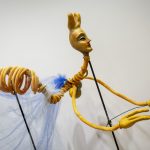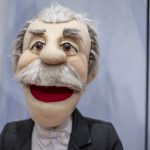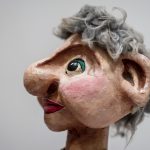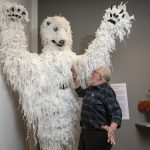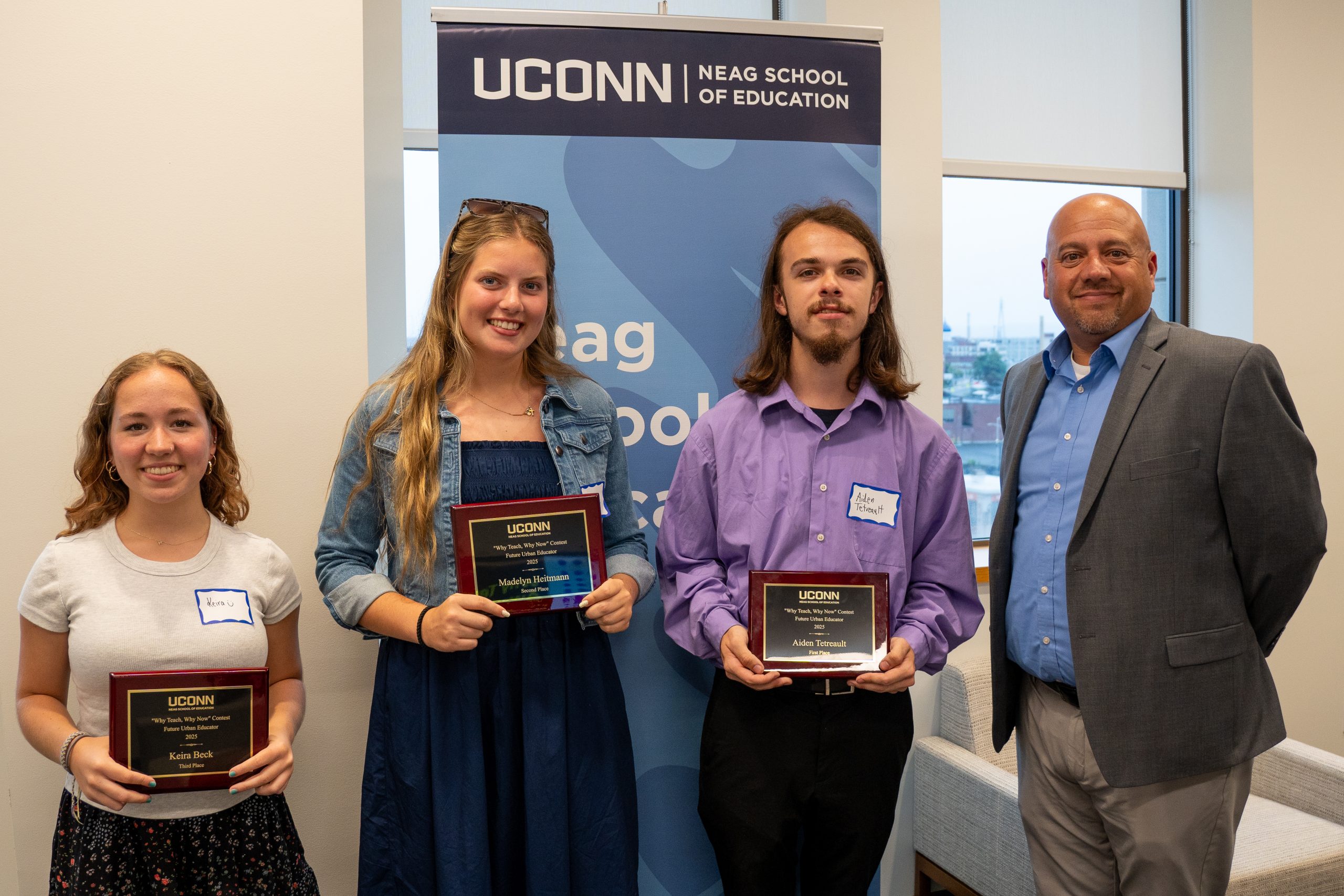When Bart Roccoberton Jr. ’90 MFA discovered that he needed one more class to complete his degree in speech and theater at Montclair State College back in 1973, his advisor suggested that he do an independent study by creating a traditional hand puppet show in the style of Punch and Judy.
“I did my research and realized I could make a hand puppet overnight,” Roccoberton recalls. “That was not the challenge I wanted to take. I decided I would make string puppets and do a small play by Bertolt Brecht. Little did I know this thing I thought I was escaping school with just sort of reached out and said, Gotcha!”
Roccoberton soon found his way to Storrs to pursue an MFA in puppetry with Frank Ballard, who created UConn’s world renowned Puppet Arts program, before starting his own puppet troupe, Pandemonium Puppet Company, and then helping to found the Institute of Professional Puppetry Arts at the Eugene O’Neill Theater Center. He succeeded Ballard as director of the Puppet Arts program in 1990 – completing his degree after his many years touring as a performer, and shifting the focus of his work, as he says, “from building puppets to building puppeteers.”
The Ballard Institute and Museum of Puppetry is celebrating Roccoberton’s career as a puppeteer and educator with “It’s Always Pandemonium,” an exhibition of nearly 100 puppets created by Roccoberton, his Pandemonium collaborators, and dozens of UConn puppet arts students under his guidance.
“Bart Roccoberton is, behind the scenes, one of the most influential puppeteers in the United States, and has been so for many years,” says John Bell, a puppeteer, director of the Ballard and author of American Puppet Modernism (Palgrave Macmillan 2005). “We thought it was time to understand not only Bart’s influence as a teacher, but also his fascinating work as a puppet designer, builder, and performer.”
The fact that Bart is pushing artists to develop their own voice and work is important. — Matt Sorensen
The exhibition was curated by MFA candidate Matt Sorensen, who says there is a cohesiveness throughout the wide array of puppets on display owing to how Roccoberton has passed along the technique of designing puppets using paper sculpture as the starting point, utilizing the shapes of cones and cylinders as the foundation to make facial features and body parts. Roccoberton learned the technique when the German master puppeteer Albrecht Roser was a visiting professor in Storrs.
“The paper sculpture technique really carries Bart through his ongoing career, even with the puppets he’s building now,” Sorensen says. “When he came back to UConn to take over for Frank Ballard, his first big production was ‘A Christmas Carol’ in 1992. There are examples of paper sculpture in that show as well as more refined sculpting techniques. Every show we’re featuring has examples of that theoretical work in there.”
Sorensen notes that Roccoberton’s collaborative work with students is an important part of the exhibition, as he guided their work in creating their original puppet shows and puppet designs or assisted them by serving as director of their performances. His students have performed or built puppets for Broadway shows, television, or films, including “Avenue Q,” “Crash and Bernstein,” “Sesame Street,” “Blue’s Room, “Between the Lions, and “It’s a Big Big World!”
Pam Arciero ’82 MFA, artistic director of the National Puppetry Conference at the Eugene O’Neill Theater Center and best known as a principal puppeteer on “Sesame Street” and “Between the Lions,” says UConn’s puppetry alumni transition quickly into working professionals.
“I hire puppeteers or I am asked for recommendations from time to time,” she says. “I can rely upon UConn graduates to be good at what they’re doing. They know puppetry. At a minimum, they know the language you use, they know building, they know movement. There’s a certain level of comfort with a UConn student. They’re professionals when they walk in.”
Among the puppets included in the exhibition are those from “A Christmas Carol” (1992); “Fabula,” “Tales of the Leatherman,” and “Eleventide” from Pandemonium Puppets; Stravinsky’s “Firebird;” the giant polar bear created for “A Winter’s Tale;” and the Arthur Fiedler puppet created for the 2016 “Puppets Take the Pops” performance developed by puppet arts students for the Boston Pops Orchestra.
“The fact that Bart is pushing artists to develop their own voice and work is important,” Sorensen says. “Some of this work has been featured internationally, some has toured for 20 years after its inception here. That work, for me, is the most significant part of his legacy, because he’s creating people who can realize a vision and when he does it here at UConn, it’s a safe and nurturing environment. You have resources and him and other faculty to guide you. Whereas it’s really difficult to do that when you’re on your own. Those skills that he imparts on us here carry us through a lifetime.”
Roccoberton says when he took over the Puppet Arts program at UConn, his experience working with Institute of Professional Puppetry Arts led him to determine that “coming here was not about my work, it was about the students’ work.” He also points to a concept articulated by the philosopher and playwright Friedrich Schiller in an essay describing what is called Spieltrieb, meaning the play instinct.
“[Schiller] says der Spieltreib is the essence of creativity. It is the naïve willingness to play and create whether useful or useless, whether good or bad; the willingness to be creative,” Roccoberton says. “That has always been part of this program. I want the students to play and to create. I want them to be responsible human citizens. I want them to consider what they’re doing, who their audience is. Is what they’re creating appropriate for the audience? The bottom line is for them to have their Spieltrieb, their play instinct.”
“It’s Always Pandemonium” continues through Sept. 29 at the Ballard Institute and Museum of Puppetry, 1 Royce Circle, Storrs. For more information go to bimp.uconn.edu.
